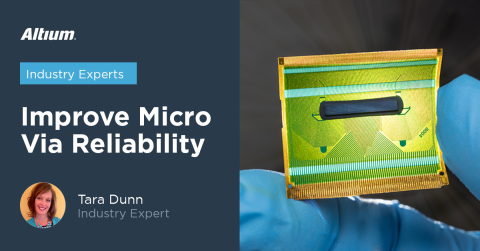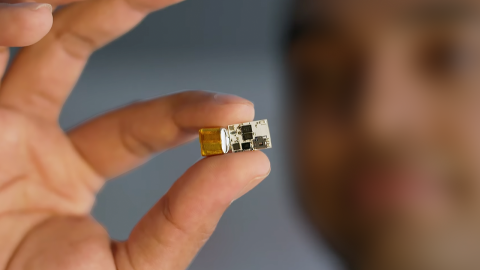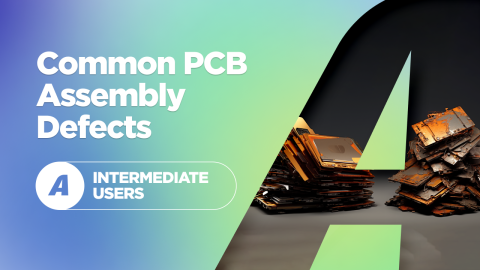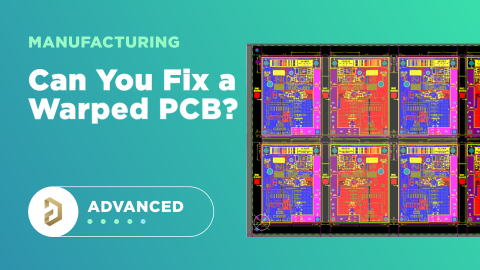RoHS 3, REACH, and PFAS in Electronics

The electronics industry is no stranger to compliance with environmental restrictions and regulations. These regulations are necessary for the health of end users, and it’s the responsibility of designers, component manufacturers, and materials manufacturers to ensure their products can comply with environmental regulations.
Today, the major environmental challenge which companies are starting to address is the persistence of PFAS in many products, including electronic assemblies and PCBs. These “forever chemicals” have very few natural degradation mechanisms, and so they tend to persist throughout the environment. For the past several years, the industry has also had to address compliance of the RoHS 3 directive, originally released in 2019, as well as REACH, which spans beyond electronics assemblies and addressed entire products.
If your company is developing a product that will be sold into the US, EU, or other industrialized market, then you will need to take some steps to ensure your product is produced sustainably.
Where You’ll Find Restricted Substances
Electronic devices are manufactured and packaged using a wide range of chemicals, including substances listed in RoHS 3, REACH, and regulations limiting PFAS. The most common areas where restricted and hazardous substances can be found include:
- PCB materials
- Cabling, cable harnesses, and wire
- Batteries
- Passive electronic components
- Packaging materials (e.g., plastics)
For example, in PCB materials, the epoxy resins used in FR4 grade laminate materials include PFAS. As a result, 90% of FR4 circuit boards will include some content of PFAS.
RoHS 3 Restricted Substances
The Restriction of Hazardous Substances (RoHS) Directive restricts the use of certain groups of hazardous substances in electrical and electronic products. This is sometimes referred to as the Pb-free directive as lead is included in the list of banned substances. This EU directive was originally enacted in 2019 and has spurned an industry-wide effort to eliminate heavy metals and certain organic compounds from electronics production. The list of banned substances is given in the following table.
|
|
|
|
|
|
|
|
|
Limits on these substances are defined in terms of their concentrations in all materials used in a manufactured electronic product. This includes all materials in the components, PCBA, packaging materials, wiring, and mechanical elements.
PFAS Restricted Substances
Polyfluoroalkyl substances (PFAS) comprises a group of 4730 chemicals that do not occur naturally in the environment. Because these substances do not occur naturally, they also do not have any natural degradation mechanisms, therefore they tend to persist once released into the environment.
In electronic devices, PFAS are used in the manufacturing process for assemblies and components. For example, certain PFAS are used in coatings for electronic devices, including moisture barrier coatings because they are resistant to many solvents and they do not degas VOCs. However, PFAS can leach into groundwater and into foods; every device that ends up in a landfill will leach its chemical content into the environment.
REACH Restricted Substances
The REACH directive also applies to electronic products, although these substances are not always found in components or assemblies. The list of REACH-restricted compounds includes a group of substances that pose direct risks to human health:
- Carcinogenic substances
- Mutagenic substances
- Endocrine disruptors
- Reproductive disruptors
- Organic pollutants
Substances prohibited under REACH may be found in materials used to build product enclosures and product packaging (plastics). These substances may also be present on mechanical parts that appear in an assembly or in the product packaging.
Who Is Responsible For Compliance?
As was mentioned above, both designers and manufacturers are responsible for compliance. Manufacturers are responsible for choosing raw materials that are compliant with these directives, for example, when selecting soldering materials and cleaning agents. If a designer intends to comply with REACH and RoHS, they need to select components that are compliant, and they need to specify this requirement in their fabrication notes.
The simplest way for designers to meet REACH/RoHS compliance is to pay attention during component selection and creation of their manufacturing requirements.
- Use components explicitly marked as RoHS/REACH compliant in datasheets
- Use a lead-free plating in PCB fabrication (immersion tin, ENIG, etc.)
- Make sure your assembler provides RoHS-compliant assembly options
To learn more about industry sustainability efforts related to RoHS 3, REACH, and PFAS regulations, take a look at our recent podcast with Kelly Scanlon, IPC’s Lead Sustainability Strategist.
Whenever you need to find and import CAD data for RoHS/REACH compliant components, make sure you use the complete set of PCB design features and integrated supply chain tools in Altium Designer®. To implement collaboration in today’s cross-disciplinary environment, innovative companies are using the Altium 365™ platform to easily share design data and put projects into manufacturing.
We have only scratched the surface of what’s possible with Altium Designer on Altium 365. Start your free trial of Altium Designer + Altium 365 today.











